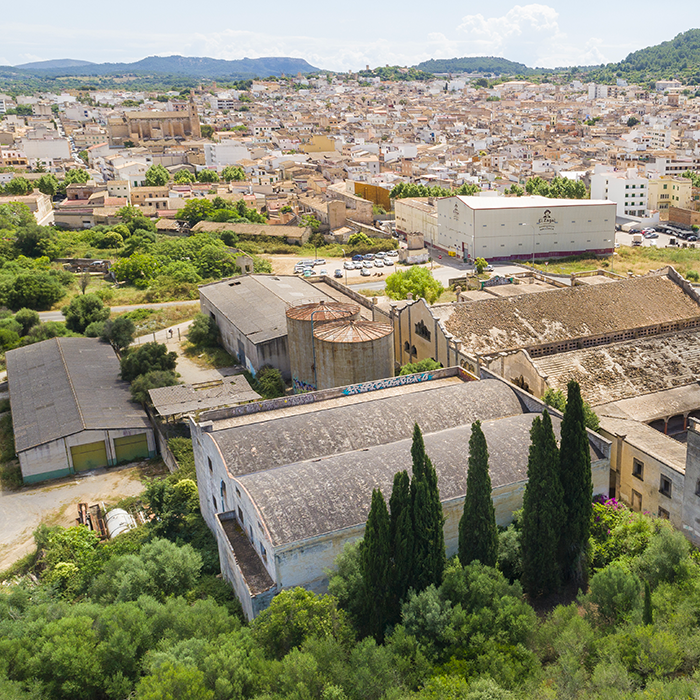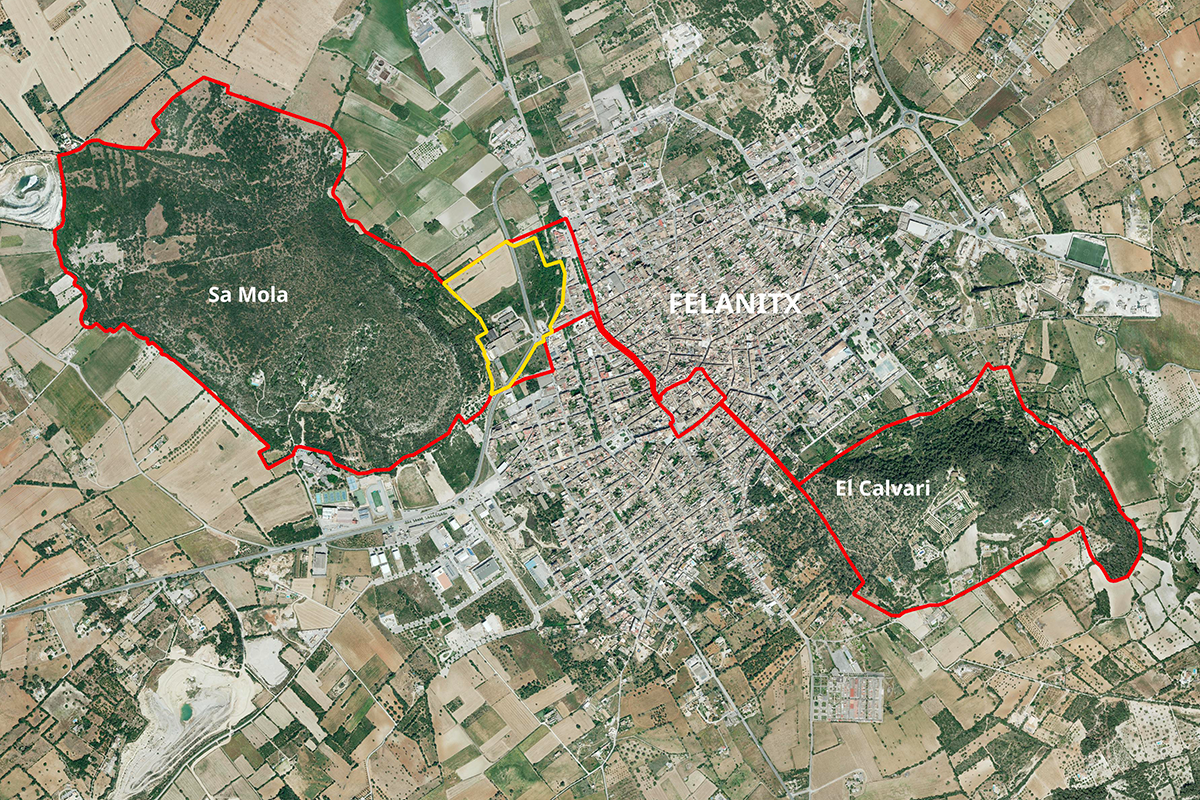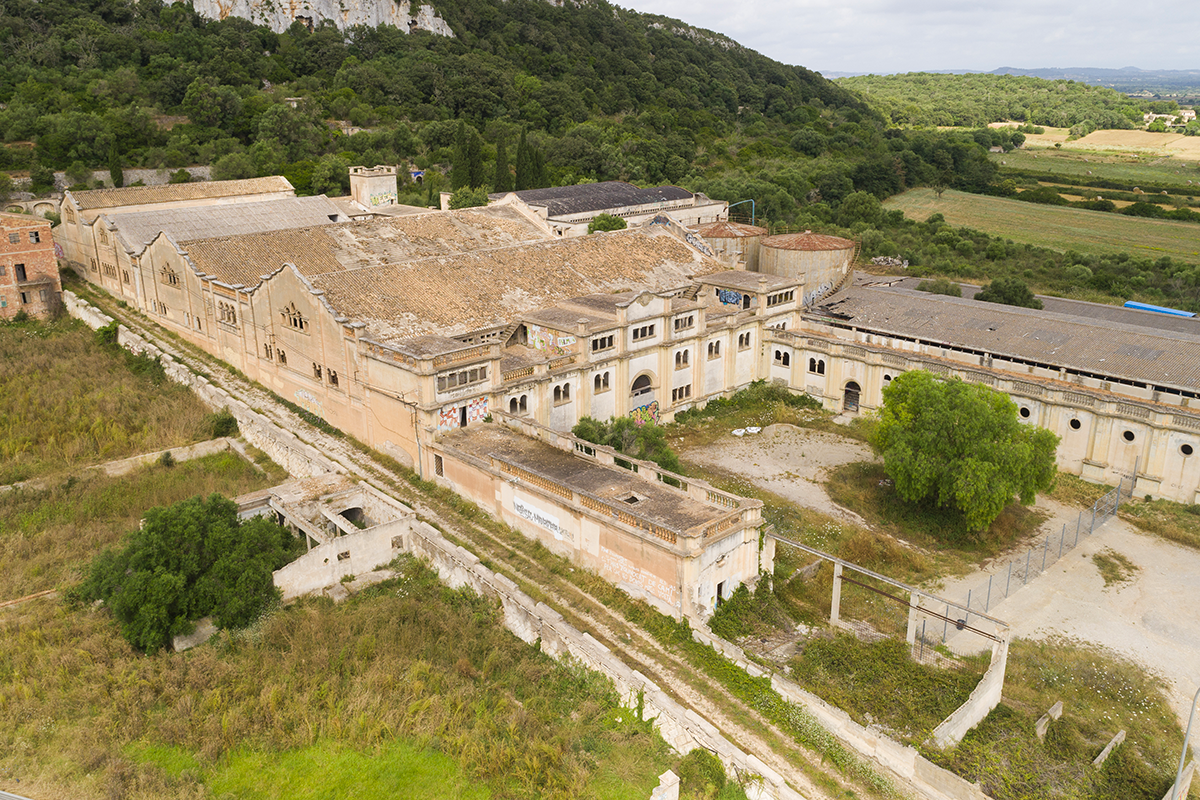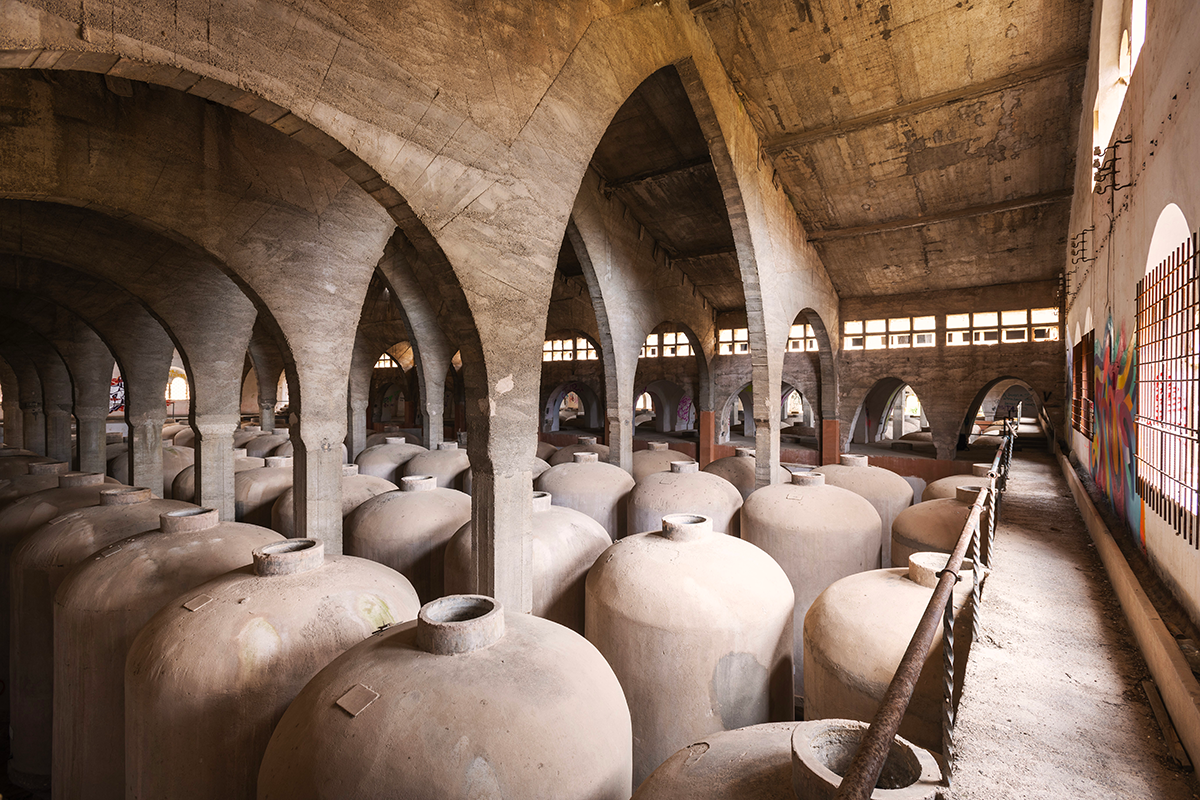Felanitx-Es Sindicat (ES)
The Synthetic Site Folder and Site Brief are available for free.
Please register and login to access the Complete Site Folder.
- Synthetic site folder EN | ES
- Site Brief EN | ES
- Complete site folder
- Site on Google Maps
- Back to map
Data

FELANITX-ES SINDICAT (ES)
Scales L/S
Team composition Architect mandatory
Location Felanitx, Mallorca, Illes Balears
Population 18.357 inhabitants
Reflection site 148,6 ha - Project site 89.871 m2
Site proposed by Regional Government of Balearic Islands (Govern de les Illes Balears)
Actors involved Govern de les Illes Balears, Consell de Mallorca, Felanitx City Council
Owner(s) of the site Consell de Mallorca
Commission after competition Master Plan and intervention project.
Phases: Basic and Execution. Building supervision pending agreement on financing.
More Information
SITE / CONTEXT
The municipality of Felanitx is located in the southeast of the island of Mallorca in the region of Migjorn, between the areas of Pla de Mallorca and Levante, bordering the Mediterranean Sea. The urban nucleus of Felanitx is located 115m above sea level, in the middle of a series of hills, among which the Puig de Sa Mola and Puig de Sant Salvador, a place of pilgrimage for the inhabitants of the region, stand out. For centuries, the cultivation of vineyard has characterised the rural landscape of the Migjorn region. Historically, Felanitx has been an important wine-growing area in Mallorca, culminating at the beginning of the 20th century (despite phylloxera) with the creation, next to the old train station, of the Oenological Station and the founding of the Cooperative Winery of Felanitx, Es Sindicat.
Es Sindicat is a symbol, a reference for its typology, style, authorship and construction. In fact, the winery is included in the list of the 100 elements of Spain’s Industrial Heritage and was declared an Asset of Cultural Interest (BIC) with the category of ‘monument’ in 2001. Built between 1919 and 1922, it is located on La Sort dels Amaradors, to the west of the town of Felanitx, sheltered by the hill known as Sa Mola. The design and the choice of the site are the result of a topographical adaptation to take advantage of the slope that accompanied the industrial process of wine making.
The Project Site includes: the public plot on which Es Sindicat is located, which the new General Plan will classify as a cultural facility; a large area to the north and east of the site, planned as a future public green space; and the adjoining plot to the south. Es Sindicat is the protagonist of a commitment to the re-emergence of a social and environmental ecosystem in a privileged setting of possibilities that can create integral solutions for a return to the land, to shared life, to connection with the environment and to the promotion of the rehabilitation of the built environment through local, sustainable and innovative construction systems.
The Reflection Site will lead us to build a global, unitary and multidisciplinary strategy to propose a rebirth of the symbolic and emotional potential that Es Sindicat provokes in the town of Felanitx, a municipality that has seen the birth and growth of the international artist Miquel Barceló. Its transformation must dialogue with the two natural landmarks that frame the urban nucleus, Sa Mola and Es Calvari.
The Territorial Area corresponds to a threatened territory, the island of Mallorca, which is suffering the effects of the overexploitation of resources caused by tourist massification. The rebirth of Es Sindicat, which succeeded in bringing together a population, has an implicit social and ecological benefit, re-emerging as a cultural reference of the highest level, at a time of social fight for recognition and recovery of the island’s own culture.
QUESTIONS TO THE COMPETITORS
Is it possible to give a second life to the monument that has been considered on the island as the ‘cathedral of wine’?
Es Sindicat is more than a building, it is a social emblem that awakens and arouses emotions of an intergenerational nature in the local and non-local population. Can this feeling be enhanced through architecture? Can the intervention encourage architectural and cultural dynamisation, not only in the municipality, but also in the rest of the island? Can it be reborn from its own foundations?
In addition, the monument acquires a very broad heritage significance. Is it possible, through rehabilitation, to harmonise elements of such value and, at the same time, ensure that they enhance socio-economic and cultural revitalisation? What will be the principles of the transformation of Es Sindicat, a unique historic building with a high level of heritage protection, that will enable its revival?
The building uses materials typical of 20th century industrial architecture, concrete, combined with local materials such as sandstone (marés). The use of pioneering construction techniques makes it a reference point, considering its insularity and historical context. How can the forcefulness of these materials be combined with new ways of designing to adapt to climate change?






Questions on the site
the pdf "Guidelines for Heritage Preservation of Es Sindicat" mentions on page 3 a plan identifying the elements which are considered central, however this plan appears to be missing from that file. Please clarify.
You can find the requiered file in PS and "Documents after launch": ES-Felanitx_Es_Sindicat-01_Directrices de intervención patrimonial - plano
Hi, I can't see any mention in the project brief about a site visit. Is there an official date scheduled for a site visit? Thanks.
The visit will take place on 12 May. We will publish the time and meeting point will be soon.
Where can I find plans and documents of the site???
All the information including plans of the reflection, project site and builindong is available on the complete site file.
In the document ‘Guidelines for heritage intervention’ it is stated that only restoration interventions can be carried out in the ‘Central Spaces’ and that they cannot be given any new specific use. In other words, these spaces cannot have a new programme. Can you clarify if this is the case or if it is possible to be flexible? En el documento de "Directrices de la intervención patrimonial" se dice que en los "Espacios centrales" solo se pueden llevar a cabo intervenciones de restauración y que no se pueden dotar de ningún uso específico nuevo. Es decir, estos espacios no pueden tener programa nuevo. ¿Pueden aclarar si es asi o si se puede ser flexible?
The interpretation of the degree of intervention allowed in the “Central Spaces” should be assessed by the participating teams, especially by the members with knowledge of heritage and history. Although the “Guidelines for heritage intervention” establish an orientation towards restoration and preservation without new uses, there is a margin of technical interpretation that can be argued based on solid heritage criteria, as long as the proposals respect the historical and heritage value of the spaces and their contents. In addition, an interdepartmental and inter-administrative commission will be set up to monitor the winning project, which will include heritage specialists and will collaborate in bringing the proposals into line with current regulations, ensuring their technical and heritage viability.
La interpretación del grado de intervención permitido en los "Espacios centrales" deberá ser valorada por los equipos participantes, especialmente por los integrantes con conocimientos en patrimonio e historia que los integren. Si bien las "Directrices de intervención patrimonial" establecen una orientación hacia la restauración y la preservación sin nuevos usos, existe un margen de interpretación técnica que puede ser argumentado con base en criterios patrimoniales sólidos, siempre que las propuestas respeten el valor histórico y patrimonial de los espacios y su contenido. Además, está prevista la creación de una comisión interdepartamental e interadministrativa de seguimiento del proyecto ganador, que contará con especialistas en patrimonio y colaborará en la adecuación de las propuestas a la normativa vigente, velando por su viabilidad técnica y patrimonial.
In the file ES-Felanitx_Es_Sindicat-SS-M3.pdf (Detailed Management Plan) the volumes that are part of the catalog of protected elements are indicated with a pattern. This plot does not correspond to the “Central Spaces” to be preserved in the document Heritage Intervention Guidelines. Can you clarify this? En el documento ES-Felanitx_Es_Sindicat-SS-M3.pdf (Plan de ordenación detallada) se indican con una trama los volúmenes que forman parte del catálogo de elementos protegidos. Esta trama no se corresponde con los "Espacios centrales" a preservar del documento Directrices de intervención patrimonial. ¿Pueden aclararlo?
The entire building is listed and has been declared an Asset of Cultural Interest (BIC), which is reflected in the Detailed Management Plan of Felanitx, pending approval (document ES-Felanitx_Es_Sindicat-SS-M3.pdf). However, the building is the result of different constructive stages, not all of equal heritage value. For this reason, the document “Guidelines for heritage intervention” distinguishes between spaces of greater historical relevance and those of lesser interest, thus establishing a qualitative criterion within the protected complex. This differentiation does not contradict the general cataloguing, but guides the intervention according to the specific heritage value of each part.
La totalidad del edificio está catalogada y ha sido declarada Bien de Interés Cultural (BIC), lo cual se refleja en el Plan de Ordenación Detallada de Felanitx, pendiente de aprobación (documento ES-Felanitx_Es_Sindicat-SS-M3.pdf). No obstante, el edificio es el resultado de distintas etapas constructivas, no todas de igual valor patrimonial. Por este motivo, el documento "Directrices de intervención patrimonial" distingue entre los espacios de mayor relevancia histórica y aquellos de menor interés, estableciendo así un criterio cualitativo dentro del conjunto protegido. Esta diferenciación no contradice la catalogación general, sino que orienta la intervención según el valor patrimonial específico de cada parte.
This site is connected to the following theme
Re-sourcing from social dynamic The “multiple heritage” of derelict buildings provides a precious source for a larger urban transformation, which is launched by interventions that operate first in the scale of the site itself, Integrating social and cultural traces in the sites’ geographical and physical rehabilitation enables an upscaling of the transformation’s impact. It can induce a second life whose urban energy radiates far beyond its physical limits.
Inducing a Second Life
Specific documents
Questions on the site
You have to be connected –and therefore registered– to be able to ask a question.
Fr. 16 May 2025
Deadline for submitting questions
Fr. 30 May 2025
Deadline for answers
Before submitting a question, make sure it does not already appear in the FAQ.
Please ask questions on sites in the Sites section.
Please ask questions on rules in the Rules section.
If your question does not receive any answer in 10 days, check the FAQ to make sure the answer does not appear under another label or email the secretariat concerned by the question (national secretariat for the sites, European secretariat for the rules).